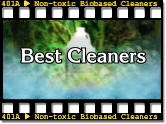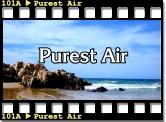
|
|
Services
–
What You Need and What You Can Expect Pro-active Environmental Technologies
to do for You –
|
Services
Table of Contents

It
is fairly commonly agreed that periodic medical checkups are beneficial
and often life-saving to those who routinely get them. The catch is
remembering or taking the time to schedule them.
The same holds true for periodic evaluations of the relative sickness
or health of a building's interior environment. . . . more
 1. The Need for Mold Services 1. The Need for Mold Services
. . . A
mold infestation ought never to be taken lightly as it has been
shown to not only directly cause numerous health symptoms –
from mild irritations to serious long term and sometimes lethal
conditions, but it can also so compromise an individual’s
immune system to the extent that the person becomes susceptible
to any number of other potential health risks, . . . more
 2. The Need for General and Specific IAQ Evaluation Services 2. The Need for General and Specific IAQ Evaluation Services
Either
along with the mold or separate from any mold concerns, there may be
issues related to other environmental factors which can run the gamut
from inordinate amounts or types of dust and particulates, to the
presence of smoke, odors, VOC's, allergens, microbial or viral
pathogens, too high or too low a relative humidity, gases -- anything
at all which adversely affects the air we need to sustain life. . . . more
SERVICES -- Part 2 -- Diagnosing the Problem

B. Diagnostics
To
aid in the early diagnosis and treatment of mold and Indoor Air
Quality issues, Pro-active Environmental Technologies
offers a wide range of services including, among others, . . . more
 1. Visual
Mold Inspection 1. Visual
Mold Inspection
Typically,
Pro-active Environmental Technologies is called on to perform a
mold inspection where mold is already visible and the client wishes
to determine the cause, specie/s, and extent of the problem, as
well as be advised as to any corrective options. Visual inspections
in this kind of case will start with the obvious and work back to
the point where the mold appears to have first started (often, but
not always, in a place out of sight), . . . more
 2. Surface Sampling 2. Surface Sampling
One
of the valuable reasons for conducting a certified mold inspection
is to rule out mold as a problem when it does not exist.
Often during the course of a mold inspection it will be discovered
that a dwelling or building may manifest discolorations in areas
where mold would logically grow. In fact, such considerations may
be the reason the client called for the inspection in the first
place. . . . more
 3. Air Sampling 3. Air Sampling
While
inspections and surface samplings are powerful diagnostic tools, but
both may fail to reveal mold and neither are effective at detecting
problems either out of the line of sight or too small to be seen by the
unaided eye. The absence of visible mold does not always mean that
there is no mold present. It is not uncommon for there to be high
concentrations of mold and mold spores where there is not even an odor
to give them away. The same is true about other toxic substances
which may be dangerous though odorless. . . . more
 a. Active
vs. Passive Air Sampling a. Active
vs. Passive Air Sampling
While
there are many different types of air samplings which can
be performed, there are really only two basic classes of
air sampling methods — passive and
active. It is important to be familiar with
the differences in the technologies, because the results between the
two can be significant. . . . more
 (1) Passive
Air Sampling (1) Passive
Air Sampling
As
the name would suggest, passive air sampling must depend upon whatever
is in the air to find and hit the target plate. The best analogy would
be to compare it to flypaper which is hung up in an area with the hope that flying insects will somehow
land on it. Sometimes it works. . . . more
 (2) Active
Air Sampling (2) Active
Air Sampling
Active
air sampling is more like the butterfly net approach, in that sampling
is not determined by what flies in of its own accord. With active
sampling a sufficient volume of air is forced to pass over the sticky
collection media which will retain whatever was flying in or being
carried by the ambient air. . . . more
 b. Two
Types of Active Air Samplers b. Two
Types of Active Air Samplers
In
order to know specifics regarding indoor air quality and how to address
any negative issues, there are two types of active air samplers. One
is not necessarily better than the other. Both are important, but
both are designed to collect a particular kind of data -- one static
and the other dynamic. . . . more
 (1) Total
Particulates (1) Total
Particulates
The first type of air sample employs a specially designed collection
cassette with a sticky target plate which will grab and hold whatever
is in the air being forced over it. Under microscopic magnification, this
allows for the enumeration and
identification of every little bit, piece, and speck of whatever
was in the air that smacked onto the target plate — usually
an unsavory mixture of . . . more

(2) Viable
Colony Count
The
second type of air sample is similar to the passive sampler, in
that it also uses a petri dish containing a growth medium. But in
the active instance, the flow of air is calculated and precise and
therefore provides accurate representation of the overall quality
of air as it relates to the presence of mold spores and microbials capable of creating
a problem. . . . more
 4. Minimally
Invasive Boroscope® Inspection 4. Minimally
Invasive Boroscope® Inspection
In
the past, just looking for mold or microbials could be an expensive and dangerous
proposition. Because either -- and especially mold -- can lurk in so many hard to reach places,
conventional practice was to observe or suspect a problem in a building
and, beginning there, to start smashing drywall (politely called
“demolition work”) to see to what extent it had spread.
It would be similar to asking a doctor to find and diagnose an internal
illness when his only tool was a scalpel or bone saw. . . . more
 5. Moisture
Detection 5. Moisture
Detection
Temperature
and relative humidity differentials are valuable clues when trying
to pinpoint a suspected problem such as mold which may not be readily visible.
Pro-active Environmental Technologies makes use of non-destructive
moisture detectors and infrared temperature and relative humidity
devices to aid in finding hidden areas where mold may be growing
or in tracking a water intrusion to its source. . . . more
SERVICES -- Part 3 -- Treating the Problem and Preventing a Recurrence
 C. Correctives C. Correctives
Too
often, corrective actions, if any, are more likely to be cosmetic
than curative. The common mis perception is that wiping or washing
a mold covered or other infected area with some sort of bleach ingredient cleaner
will take care of the problem which can then be followed by a fresh coat of paint
in more extreme cases. In both instances the assumption seems to
be that if the color goes away the mold goes away. Somehow we believe that what
we cannot see cannot then exist. Unfortunately, such is not the
case.
. . . more
 D. Abatement D. Abatement
Once
the source of mold or microbial infection has been found and the contributing causes addressed,
it is time to rid the structure of the accumulated problem. Especially with mold, this must
be done very cautiously, for carelessness at this stage can not
only fail to kill the existing mold but can also fail to capture
the disturbed mold spores which are designed to rapidly disperse
by the billions upon any movement or commotion, spreading almost
instantaneously to other parts of the building. A mishap at this
point can be disastrous for all parties concerned. . . . more
 1. Notice. 1. Notice.
Discussions below do not include other safety issues as to the treatment of hazardous
materials and removal procedures for construction materials,
furnishings, household items, personal effects, or any other item/s
or component/s tainted by or suspected of being infected with mold
and/or mold spores and/or mold by-products and/or other pathogenic contaminants. . . . more

For smoke and odor issues, the idea of filtering
enough air to clear it is almost laughable, yet, until recently, that
was all that was available. At best, all that can be achieved with this
method is diluting
the problem sufficiently that it becomes less noticeable --
followed by or accompanied with the introduction of a counter scent to
offset the smell of the smoke or offending odor. For
microbial infestations, until of late we have used refined and/or synthesized
chemicals which have given rise to increasingly resistant strains of
infections. . . . more
If
the only mode of transportation available were still the ox cart, it
would make sense to use it as often as possible. But where newer,
better, faster, less cumbersome technologies exist and are easily and
economically obtained, it seems strange to hold onto old methods and
ways -- especially when the life and health of vast populations are at
stake, as they are with indoor air quality issues. . . . more
 (1) The
Procedures of Conventional Protocol (1) The
Procedures of Conventional Protocol
Conventional
remediation protocol has existed since at least Older Testament
times, as evidenced in the book of Leviticus 14:33-48.
Basically, conventional methods had to do with identification of the
problem, removal of the occupants once the problem was diagnosed,
removal of the offending materials, replacing elements which had been
removed, checking/testing again for the effectiveness of the repairs,
and destruction of the whole building if the problem persisted. Of
course, we have added some modern twists with the technology more
recently available, but otherwise there are great similarities from
ancient times to today. . . . more
 (2) The
Prerequisites for Conventional Protocol (2) The
Prerequisites for Conventional Protocol
Physical and cosmetic issues are not all that need to be considered.
Before
any actual conventional treatment or remediation is to be undertaken,
standard protocol for dealing with actual or suspected mold
infected/infested areas must include, at the very least . . . more
 b. Superior
Protocol -- Introduction to "BATT" (Best Available Today's Technology) -- For Mold, Odor, and Microbial Abatement. b. Superior
Protocol -- Introduction to "BATT" (Best Available Today's Technology) -- For Mold, Odor, and Microbial Abatement.
Superior
to the above conventional protocol is a procedure called “mold sanitization” or "air sanitization",
a proprietary process which uniquely duplicates indoors the same
processes designed and found in nature to kill virtually all existing mold/microbes
and kill/sterilize most, if not all, mold spores. This combination of technologies
has proven to be as effective as or more than that of the standard
conventional mold remediation, takes far less time, inconveniences
(and displaces) for a much shorter period (which alone can represent
a substantial savings), costs anywhere from the same to substantially
less than conventional remediation, and is accomplished by the following.
. . . more
 E. Mold
Prevention and Indoor Air Quality Programs E. Mold
Prevention and Indoor Air Quality Programs
. . . It is reasonable to assume that, even after an initial mold, microbial, or smoke problem
has been sanitized, there exists the potential for such a problem to come
back at another time, howbeit in not necessarily as virulent a
form. Therefore, proactive steps need to be taken to prevent the
recurrence of such outbreaks and to assure safe indoor air quality
in the future.
They employ the same technologies as those used for sanitization but
scaled back to a preventative level. These pro-active steps include at
minimum the following. . . . more
|
Information
herein offered is provided so that reasonably intelligent individuals
of competent mental capacity and majority age can better make informed choices
regarding matters discussed.
Along with being a service provider with certifications in specific
areas regarding indoor air quality, breathe-easier.com is an independent authorized dealer for certain products and equipment manufactured and/or supplied by others. Any legally held trademarks,
tradenames, logos, and applicable copyrighted materials are and
remain solely the property of same's lawful owners and said ownership is
neither relinquished, nor diminished, nor transferred by inclusion on
this
site.
All statements and/or claims
concerning any particular equipment and the technologies behind such
are based upon manufacturers' published materials regarding same, and
said manufacturers are solely responsible for such materials and their
content. Any and all product guarantees or warranties of any sort
are at all times solely the responsibility of the manufactures and
according to the current published terms regarding same which consumers
are urged to check out for themselves.
Anecdotal reference may from time to time be made regarding the
applicability, placement, or use of one or more technologies or
products in circumstances which may or may not reflect those found in
any other situation. Consumers should be aware that consideration
should be given to specific environmental issues which may be different
from and/or in addition to those cited in such anecdotal references. At
no time is or will breathe-easier.com be in any
manner responsible for factors withheld or in any way not disclosed by
the consumer.
Responsibility to engage or use or not engage or use any
particular service or technology is solely that of the consumer.
Further, from time to time testimonials may be quoted
from individuals as consumers regarding their own personal experiences
regarding (a)
service(s) or product(s) offered by or obtained from breathe-easier.com. Such individuals do so on their own
behalf of their own free will in the exercise of their God-given and
Constitutionally
guaranteed right to free speech and are neither liable for nor
compensated for their
comments. While breathe-easier.com may include such comments and may try to verify such comments where possible, breathe-easier.com is not liable for the verity or the use,
disuse, or misuse of any such information so included.
No claims are made, expressed, or implied
regarding the diagnosis and/or treatment of any disease or medical
condition, and any parties who know they have or suspect that they have any type of medical condition or disease are encouraged to seek competent medical attention and advice from more than one source or party.
What is offered on a best efforts basis is services and/or equipment whereby some or all the indoor environment of a building or other environmental space or specific components of same may be altered or treated, with the intention of making a healthier, safer place for those who must occupy such space/s.
|

Home
* Table of Contents *
Part 1 -- The Need for What Pro-active Environmental Technologies Does
Part 2 -- Diagnosing the Problem
Part 3 -- Treating the Problem and Preventing a Recurrence
Solutions
(Specific Fixes to What's Wrong with the Air You Breathe Where You Live and Work)
Personal Solutions
Residential Solutions
Commercial Solutions

 All materials not supplied by manufacturers or others are
Copyright
2005 - 2014 -- breathe-easier.com
-- All Rights Reserved
All materials not supplied by manufacturers or others are
Copyright
2005 - 2014 -- breathe-easier.com
-- All Rights Reserved

|
 |
NEW!

Check
out the videos


A. The
Need for IAQ Services
It's a much-needed checkup for your building and the air you are breathing.


1. The Need for Mold Services
There's more than the appearance or lack of visible mold at stake. It could be your health and life!
go>>


2. The Need for General and Specific IAQ Evaluation Services
What you are breathing is either helping you stay healthy or making you sick.
go>>


B. Diagnostics -- Getting to the Source and Extent of the Problem
go>>


1. Visual
Mold Inspection
Start with the obvious. If you can see it, it must be taken away.


2. Surface Sampling
Not every discoloration is mold. Better know the difference. Can you tell?

3. Air Sampling
It's what you can't see in the air but are still breathing that can be the most harmful. Here's how to check it out.

a. Active
vs. Passive Air Sampling
Two ways to find out what's in the air and which is best.


(1) Passive
Air Sampling
Waiting for the contaminates to decide to hit the target on their own. Nice when it works, but how often is that?


(2) Active
Air Sampling
It's about going after what is in the air so you really know what you are dealing with.


b. Two
Types of Active Air Samplers
Specific ways to target specific contaminates.


(1) Total
Particulates
Getting a count of everything that wants to go into your airways.


(2) Viable
Colony Count
Besides being just downright obnoxious, how likely is what you are breathing going to cause an infestation or an infection?


4. Minimally
Invasive Boroscope® Inspection
This is a chance to see what is going on inside wall cavities and other out-of-sight places.


5. Moisture
Detection
Mold and pathogens, like us, need moisture. Are we giving them an opportunity to thrive?



C. Correctives
Knowing what is wrong is only part of the battle. Now let's explore our options for fixing the problem.


D. Abatement
When we talk about getting rid of mold, what are we really talking about?


1. Notice.
Venture into the Mold Zone only with extreme care and protective measures.


2. The
Options
Is there only one way to proceed, and if there are alternatives, what are they and how effective can they be?


a. Standard
("Conventional") Protocol
-- Ox cart technology in a space age world.


(1) The
Procedures of Conventional Protocol
If we are going to use yesterday's technology, let's at least do it the right way.


(2) The
Prerequisites for Conventional Protocol
There are certain things that must be done FIRST before going after mold in the conventional way.


b. Superior
Protocol --
Introduction to "BATT" (Best Available Today's Technology) -- For Mold, Odor, and Microbial Abatement.


E. Mold
Prevention and Indoor Air Quality Programs
It's one thing to get rid of an existing problem, but do we want a repeat appearance?
|

































































